 TFT-LCD Display Technology FeaturesIn previous articles, we discussed the market prospects of TFT-LCD display technology. If classified by product display size and application field, apart from the small-sized wearable devices and smartphones where the market share of TFT-LCD display technology has been eroded by AMOLED, medium and large-sized products still primarily use TFT-LCD display technology.For more details, refer to our earlier article: 【Industry News】Market Prospects of TFT-LCD Display Technology, which may not be as bad as you think.Although it is an undeniable fact that the market share of TFT-LCD display technology in small sizes is decreasing, it is also an inevitable trend. After all, in the smartphone field, AMOLED has many advantages that LCD cannot match.However, this does not mean that there are no updates and iterations in the technology of TFT-LCD displays. In regions such as Africa, South Asia, Southeast Asia, Latin America, and Central Asia, smartphones still primarily use TFT-LCD display technology.As an industry veteran, I often engage in technical exchanges with smartphone terminal customers, focusing on the development trends of TFT-LCD display technology.In this article, based on the planning of display products for mobile terminals and my understanding of the development of display technology used in smartphones, I will briefly discuss the trends of TFT-LCD display technology in smartphones.01 High BrightnessThe pursuit of high brightness in TFT-LCD display modules has always been an unremitting goal for professionals in the display industry. High brightness display modules can serve as a marketing tool for terminal customers to showcase their product advantages and demonstrate strong technical capabilities. Additionally, they provide consumers with a better experience when using smartphones in bright light (such as sunny outdoor scenes).
TFT-LCD Display Technology FeaturesIn previous articles, we discussed the market prospects of TFT-LCD display technology. If classified by product display size and application field, apart from the small-sized wearable devices and smartphones where the market share of TFT-LCD display technology has been eroded by AMOLED, medium and large-sized products still primarily use TFT-LCD display technology.For more details, refer to our earlier article: 【Industry News】Market Prospects of TFT-LCD Display Technology, which may not be as bad as you think.Although it is an undeniable fact that the market share of TFT-LCD display technology in small sizes is decreasing, it is also an inevitable trend. After all, in the smartphone field, AMOLED has many advantages that LCD cannot match.However, this does not mean that there are no updates and iterations in the technology of TFT-LCD displays. In regions such as Africa, South Asia, Southeast Asia, Latin America, and Central Asia, smartphones still primarily use TFT-LCD display technology.As an industry veteran, I often engage in technical exchanges with smartphone terminal customers, focusing on the development trends of TFT-LCD display technology.In this article, based on the planning of display products for mobile terminals and my understanding of the development of display technology used in smartphones, I will briefly discuss the trends of TFT-LCD display technology in smartphones.01 High BrightnessThe pursuit of high brightness in TFT-LCD display modules has always been an unremitting goal for professionals in the display industry. High brightness display modules can serve as a marketing tool for terminal customers to showcase their product advantages and demonstrate strong technical capabilities. Additionally, they provide consumers with a better experience when using smartphones in bright light (such as sunny outdoor scenes).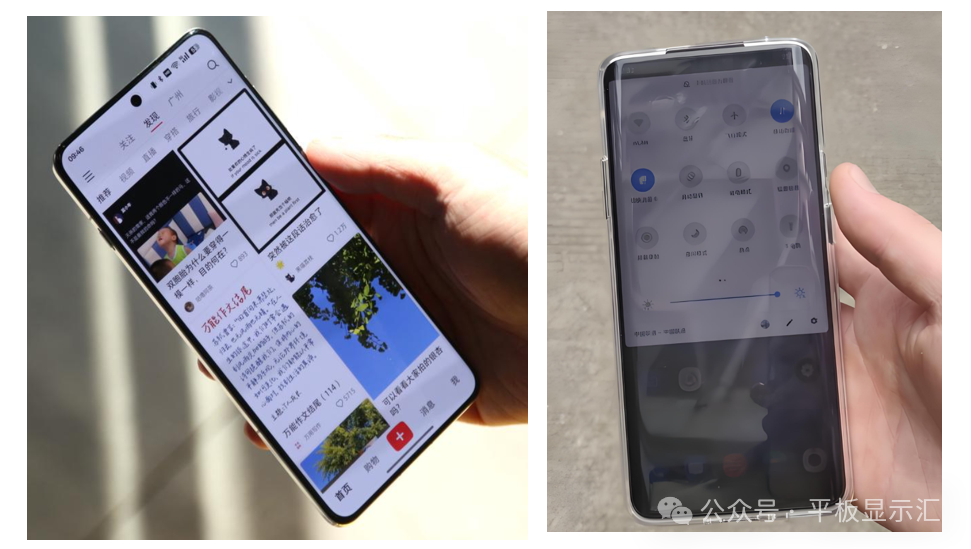 Comparison of High Brightness and Standard Brightness Display Modules in Strong LightTaking the LCD display modules used in mid-range smartphones as an example, the center brightness requirement for fully bonded display modules (TLCM) has increased from 400-500 nits (typ) before 2023 to 500-650 nits (typ) in 2024, and further to 750-800 nits (typ) in 2025, showing a significant increase in brightness.
Comparison of High Brightness and Standard Brightness Display Modules in Strong LightTaking the LCD display modules used in mid-range smartphones as an example, the center brightness requirement for fully bonded display modules (TLCM) has increased from 400-500 nits (typ) before 2023 to 500-650 nits (typ) in 2024, and further to 750-800 nits (typ) in 2025, showing a significant increase in brightness. Brightness Development Trends of TFT-LCD Display ModulesTo achieve high brightness display modules, industry chain partners are working together and contributing their expertise. For example, panel manufacturers are improving the transmittance of LCD panels; polarizer manufacturers are introducing high-transmittance polarizers; LED manufacturers are launching high-brightness chips and dual chips; optical material manufacturers are finding ways to enhance the reflectivity of reflective films and increase the gain coefficient of brightness enhancement films…There are many solutions to improve the brightness of TFT-LCD display modules, but fundamentally, there are two main approaches:Increasing the brightness of the backlight and enhancing the transmittance of the LCD panel.Of course, increasing the brightness of the backlight and the transmittance of the LCD panel involves many solutions, but implementing them also faces significant challenges, requiring a balance between the brightness of the display module and other key technical indicators, costs, reliability, etc.
Brightness Development Trends of TFT-LCD Display ModulesTo achieve high brightness display modules, industry chain partners are working together and contributing their expertise. For example, panel manufacturers are improving the transmittance of LCD panels; polarizer manufacturers are introducing high-transmittance polarizers; LED manufacturers are launching high-brightness chips and dual chips; optical material manufacturers are finding ways to enhance the reflectivity of reflective films and increase the gain coefficient of brightness enhancement films…There are many solutions to improve the brightness of TFT-LCD display modules, but fundamentally, there are two main approaches:Increasing the brightness of the backlight and enhancing the transmittance of the LCD panel.Of course, increasing the brightness of the backlight and the transmittance of the LCD panel involves many solutions, but implementing them also faces significant challenges, requiring a balance between the brightness of the display module and other key technical indicators, costs, reliability, etc.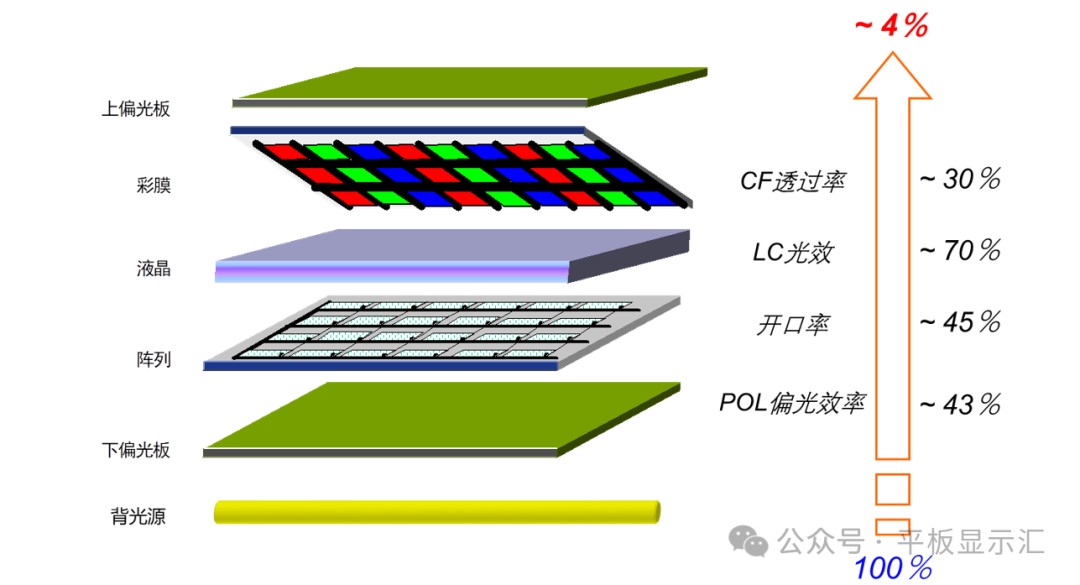 Factors Influencing Brightness of TFT-LCD Display Modules02 Ultra-Narrow BezelsThe trend of ultra-narrow bezels in TFT-LCD display modules has always been a hot topic in the industry. By reducing the width of the bezels around the display screen, consumers can enjoy a higher screen-to-body ratio and a better visual impact.
Factors Influencing Brightness of TFT-LCD Display Modules02 Ultra-Narrow BezelsThe trend of ultra-narrow bezels in TFT-LCD display modules has always been a hot topic in the industry. By reducing the width of the bezels around the display screen, consumers can enjoy a higher screen-to-body ratio and a better visual impact.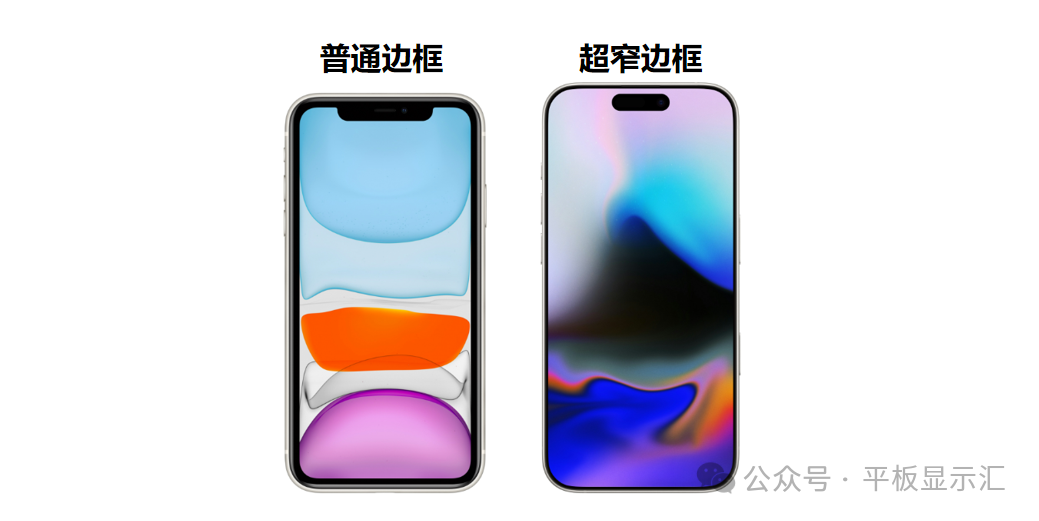 Comparison of Standard Bezels and Ultra-Narrow BezelsIn achieving ultra-narrow bezels for TFT-LCD displays, various aspects such as LCD display panel design, backend processing technology, and structural matching of display modules and complete devices have led to the emergence of many well-known professional terms and jargon in the industry, such as: GOA design, sunk bump, Mux 1:6, Dual Gate, COF/COP packaging technology, narrow bezel three-side glue dispensing technology, internal sealing glue technology, LIPO technology, etc.I have detailed the implementation solutions for ultra-narrow bezels in TFT-LCD displays in a previous article: 【Technical Insights】Understanding the Implementation Solutions and Challenges of Narrow Bezels in TFT-LCD.There are many ways to achieve ultra-narrow bezels in TFT-LCD display modules, but ultimately it depends on the LCD display panel; within the display panel, the ultra-narrow bezel is primarily determined by the LCD D-Border (bottom border); after all, the upper, left, and right bezels have already reached a very extreme level, making further improvements difficult.
Comparison of Standard Bezels and Ultra-Narrow BezelsIn achieving ultra-narrow bezels for TFT-LCD displays, various aspects such as LCD display panel design, backend processing technology, and structural matching of display modules and complete devices have led to the emergence of many well-known professional terms and jargon in the industry, such as: GOA design, sunk bump, Mux 1:6, Dual Gate, COF/COP packaging technology, narrow bezel three-side glue dispensing technology, internal sealing glue technology, LIPO technology, etc.I have detailed the implementation solutions for ultra-narrow bezels in TFT-LCD displays in a previous article: 【Technical Insights】Understanding the Implementation Solutions and Challenges of Narrow Bezels in TFT-LCD.There are many ways to achieve ultra-narrow bezels in TFT-LCD display modules, but ultimately it depends on the LCD display panel; within the display panel, the ultra-narrow bezel is primarily determined by the LCD D-Border (bottom border); after all, the upper, left, and right bezels have already reached a very extreme level, making further improvements difficult.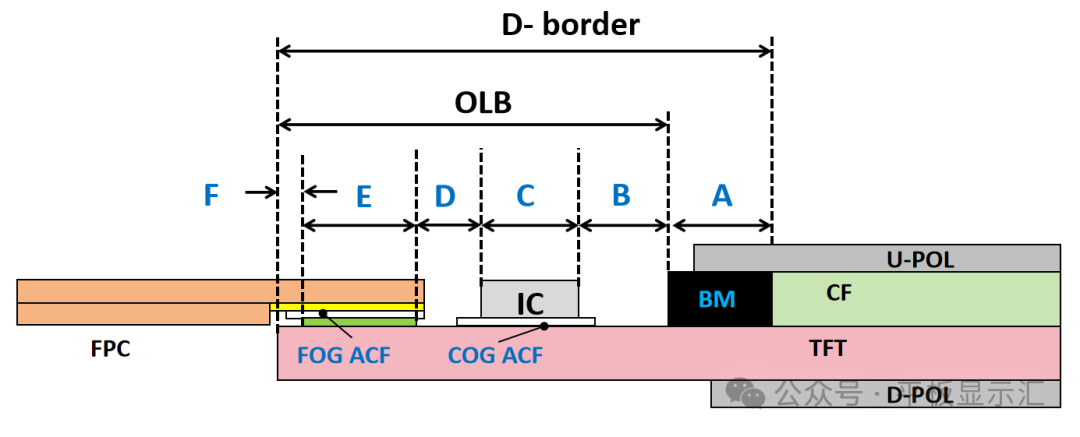 Illustration of TFT-LCD D-Border BreakdownTaking the LCD display panels used in mid-range smartphones as an example, the width of the D-Border can generally indicate the trend of display modules moving towards ultra-narrow bezels.① a-Si LCD Display Panels: The mainstream width of the D-Border has narrowed from 3.5-3.6mm in 2023 to 3.2-3.25mm in 2024, and further to 3.05mm in 2025.② LTPS LCD Display Panels: The mainstream width of the D-Border has narrowed from 3.05-3.15mm in 2023 to 2.6-2.7mm in 2024, and further to 2.5-2.55mm in 2025.
Illustration of TFT-LCD D-Border BreakdownTaking the LCD display panels used in mid-range smartphones as an example, the width of the D-Border can generally indicate the trend of display modules moving towards ultra-narrow bezels.① a-Si LCD Display Panels: The mainstream width of the D-Border has narrowed from 3.5-3.6mm in 2023 to 3.2-3.25mm in 2024, and further to 3.05mm in 2025.② LTPS LCD Display Panels: The mainstream width of the D-Border has narrowed from 3.05-3.15mm in 2023 to 2.6-2.7mm in 2024, and further to 2.5-2.55mm in 2025. Development Trends of Narrow Bezels in TFT-LCD Display Modules03 High ResolutionHigh-resolution TFT-LCD display modules are also pursued by all smartphone terminals. In recent years, the trend has shifted from HD/720p (high definition), FHD/1080p (full high definition), to 2K/QHD/1440p, and then to 4K/UHD (ultra high definition).
Development Trends of Narrow Bezels in TFT-LCD Display Modules03 High ResolutionHigh-resolution TFT-LCD display modules are also pursued by all smartphone terminals. In recent years, the trend has shifted from HD/720p (high definition), FHD/1080p (full high definition), to 2K/QHD/1440p, and then to 4K/UHD (ultra high definition). Comparison of Standard Resolution and High ResolutionThere are many ways to improve the resolution of TFT-LCD display panels. The most common methods include: reducing pixel size to increase the number of pixels per unit area; using high mobility materials, such as IGZO and LTPS instead of a-Si; optimizing the arrangement of RGB pixels, etc.Of course, higher resolution is not always better, as the human eye has a limit to recognizing high-resolution displays, which is what Apple defines as a “Retina Display.”Specifically, when a screen’s pixel density reaches 326 pixels per inch (PPI), it is referred to as a “Retina Display.”Evaluating the user experience based on the resolution and pixel density of a display panel is often insufficient; it must also consider the size of the display panel and the viewing distance.After all, different sizes of display panels have different optimal viewing distances.
Comparison of Standard Resolution and High ResolutionThere are many ways to improve the resolution of TFT-LCD display panels. The most common methods include: reducing pixel size to increase the number of pixels per unit area; using high mobility materials, such as IGZO and LTPS instead of a-Si; optimizing the arrangement of RGB pixels, etc.Of course, higher resolution is not always better, as the human eye has a limit to recognizing high-resolution displays, which is what Apple defines as a “Retina Display.”Specifically, when a screen’s pixel density reaches 326 pixels per inch (PPI), it is referred to as a “Retina Display.”Evaluating the user experience based on the resolution and pixel density of a display panel is often insufficient; it must also consider the size of the display panel and the viewing distance.After all, different sizes of display panels have different optimal viewing distances.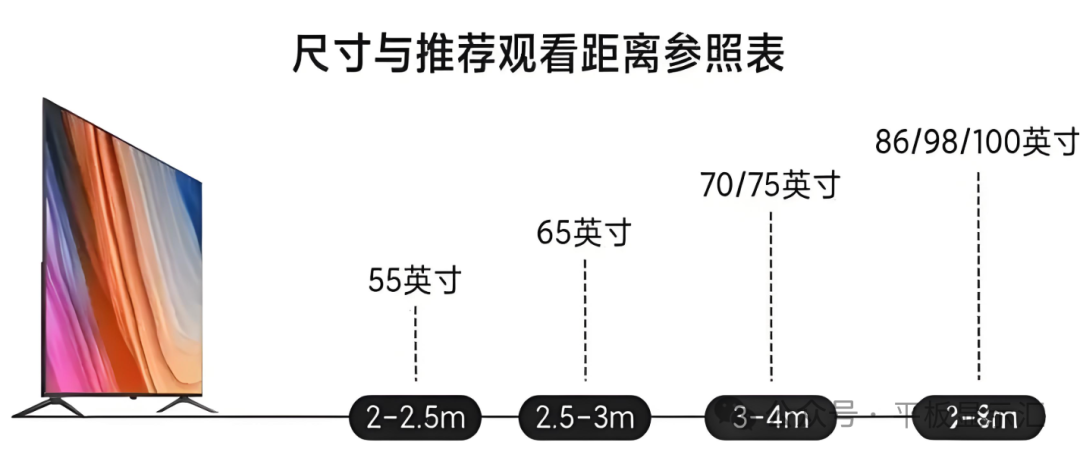 Recommended Viewing Distances for TFT-LCD TV Panel SizesReturning to the development trends of resolutions in mid-range LCD display panels used in smartphones, they will vary based on the different LCD backplane materials used.① a-Si LCD Display Panels/HD Level Resolution: The mainstream resolution has been evaluated to increase from 720p before 2023 to the recently popular 900p. However, due to cost and brightness sacrifice issues, the 900p resolution has not been mass-produced.② LTPS LCD Display Panels/FHD Level Resolution:The mainstream resolution is expected to increase from 1080p in 2023-2024 to 1280p in 2025. Currently, IC manufacturers like FocalTech and ILITEK are planning ICs for this resolution, and we will see if they can achieve mass production.
Recommended Viewing Distances for TFT-LCD TV Panel SizesReturning to the development trends of resolutions in mid-range LCD display panels used in smartphones, they will vary based on the different LCD backplane materials used.① a-Si LCD Display Panels/HD Level Resolution: The mainstream resolution has been evaluated to increase from 720p before 2023 to the recently popular 900p. However, due to cost and brightness sacrifice issues, the 900p resolution has not been mass-produced.② LTPS LCD Display Panels/FHD Level Resolution:The mainstream resolution is expected to increase from 1080p in 2023-2024 to 1280p in 2025. Currently, IC manufacturers like FocalTech and ILITEK are planning ICs for this resolution, and we will see if they can achieve mass production. Development Trends of Resolution in TFT-LCD Display Modules04 Thickness ReductionThe demand for thinner TFT-LCD display modules is also urgent for smartphone terminals. Reducing the thickness of display modules can lower the overall thickness and weight of the device, providing a better handheld experience. Additionally, within a certain thickness of the device, it allows for the inclusion of higher-capacity batteries, resulting in longer standby and usage times.
Development Trends of Resolution in TFT-LCD Display Modules04 Thickness ReductionThe demand for thinner TFT-LCD display modules is also urgent for smartphone terminals. Reducing the thickness of display modules can lower the overall thickness and weight of the device, providing a better handheld experience. Additionally, within a certain thickness of the device, it allows for the inclusion of higher-capacity batteries, resulting in longer standby and usage times.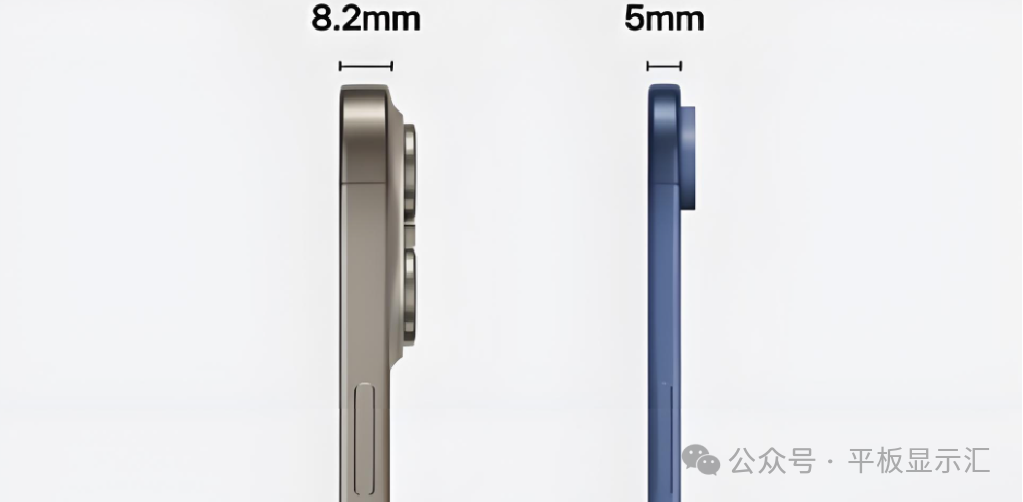 Comparison of Standard Thickness and Ultra-Thin Thickness DevicesThere are many ways to reduce the thickness of TFT-LCD display modules, such as using thinner materials for cover glass, OCA, polarizers, LCD, and backlight modules.Taking the currently mainstream blind hole smartphone display modules as an example, the thinning solutions for each key component are as follows:① Cover glass thickness has changed from 0.7mm to 0.65mm, and even to 0.58mm; however, after reducing the thickness of the cover glass, it is recommended to use a two-stage reinforced cover glass material to ensure overall strength.② Blind hole OCA thickness has changed from 0.15mm to 0.1mm; currently, some OCA manufacturers are promoting 0.075mm thickness, but the thinning OCA needs to focus on the performance of gap-filling.③ Blind hole polarizer thickness has changed from a total of 160um to 150um, and even to 140um; it is important to note that as the polarizer thickness decreases, the risk of failure in reliability testing increases.④ Blind hole LCD display panel thickness has changed from 0.16mm to 0.15mm, and even to 0.14mm; during the thinning process, attention must be paid to the PV value at the blind hole to avoid affecting the front camera’s performance.⑤ There are many solutions for reducing the thickness of backlight modules, such as reducing the thickness of light guide plates and using composite brightness enhancement films instead of traditional top and bottom brightness enhancement films, but I will not elaborate on this here.
Comparison of Standard Thickness and Ultra-Thin Thickness DevicesThere are many ways to reduce the thickness of TFT-LCD display modules, such as using thinner materials for cover glass, OCA, polarizers, LCD, and backlight modules.Taking the currently mainstream blind hole smartphone display modules as an example, the thinning solutions for each key component are as follows:① Cover glass thickness has changed from 0.7mm to 0.65mm, and even to 0.58mm; however, after reducing the thickness of the cover glass, it is recommended to use a two-stage reinforced cover glass material to ensure overall strength.② Blind hole OCA thickness has changed from 0.15mm to 0.1mm; currently, some OCA manufacturers are promoting 0.075mm thickness, but the thinning OCA needs to focus on the performance of gap-filling.③ Blind hole polarizer thickness has changed from a total of 160um to 150um, and even to 140um; it is important to note that as the polarizer thickness decreases, the risk of failure in reliability testing increases.④ Blind hole LCD display panel thickness has changed from 0.16mm to 0.15mm, and even to 0.14mm; during the thinning process, attention must be paid to the PV value at the blind hole to avoid affecting the front camera’s performance.⑤ There are many solutions for reducing the thickness of backlight modules, such as reducing the thickness of light guide plates and using composite brightness enhancement films instead of traditional top and bottom brightness enhancement films, but I will not elaborate on this here.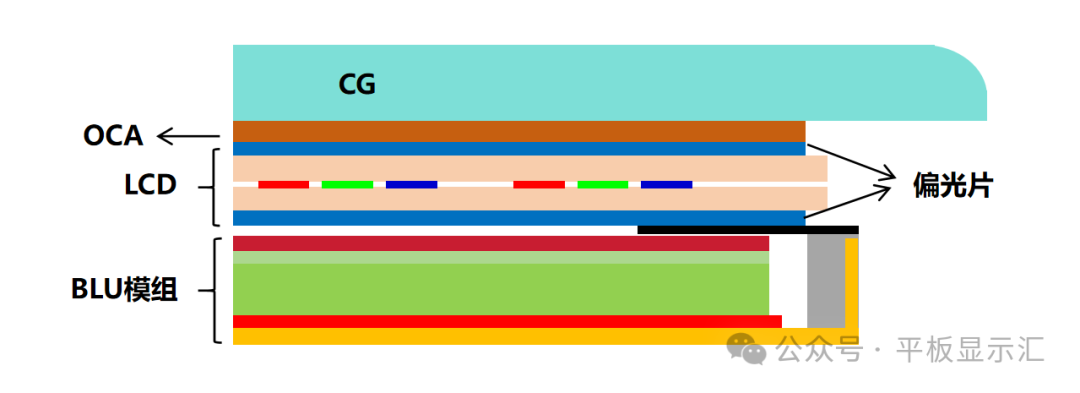 Illustration of Thickness Stacking in TFT-LCD Display ModulesTaking the thickness of blind hole LCD display modules used in mid-range smartphones as an example,before 2023the thickness of fully bonded display modules (TLCM) was 2.1-2.2mm, and the thickness of display modules was 1.35-1.5mm; in 2024, the TLCM thickness is expected to be 2.0-2.05mm, and the LCM thickness around 1.25-1.3mm; by 2025, the TLCM thickness is expected to be 1.8-1.9mm, and the LCM thickness 1.1-1.2mm, showing a clear trend towards thickness reduction.
Illustration of Thickness Stacking in TFT-LCD Display ModulesTaking the thickness of blind hole LCD display modules used in mid-range smartphones as an example,before 2023the thickness of fully bonded display modules (TLCM) was 2.1-2.2mm, and the thickness of display modules was 1.35-1.5mm; in 2024, the TLCM thickness is expected to be 2.0-2.05mm, and the LCM thickness around 1.25-1.3mm; by 2025, the TLCM thickness is expected to be 1.8-1.9mm, and the LCM thickness 1.1-1.2mm, showing a clear trend towards thickness reduction. Development Trends of Thickness in TFT-LCD Display Modules05 High Refresh RateBefore discussing refresh rates, it is important to clarify that the refresh rate mentioned here refers to the display refresh rate, not the touch-related refresh rate or reporting rate.The demand for high refresh rates in TFT-LCD display modules has come slightly later compared to high brightness, ultra-narrow bezels, high resolution, and thickness reduction.Smartphones using TFT-LCD display modules typically have a display refresh rate of 60Hz, with the highest currently reaching 144Hz.
Development Trends of Thickness in TFT-LCD Display Modules05 High Refresh RateBefore discussing refresh rates, it is important to clarify that the refresh rate mentioned here refers to the display refresh rate, not the touch-related refresh rate or reporting rate.The demand for high refresh rates in TFT-LCD display modules has come slightly later compared to high brightness, ultra-narrow bezels, high resolution, and thickness reduction.Smartphones using TFT-LCD display modules typically have a display refresh rate of 60Hz, with the highest currently reaching 144Hz.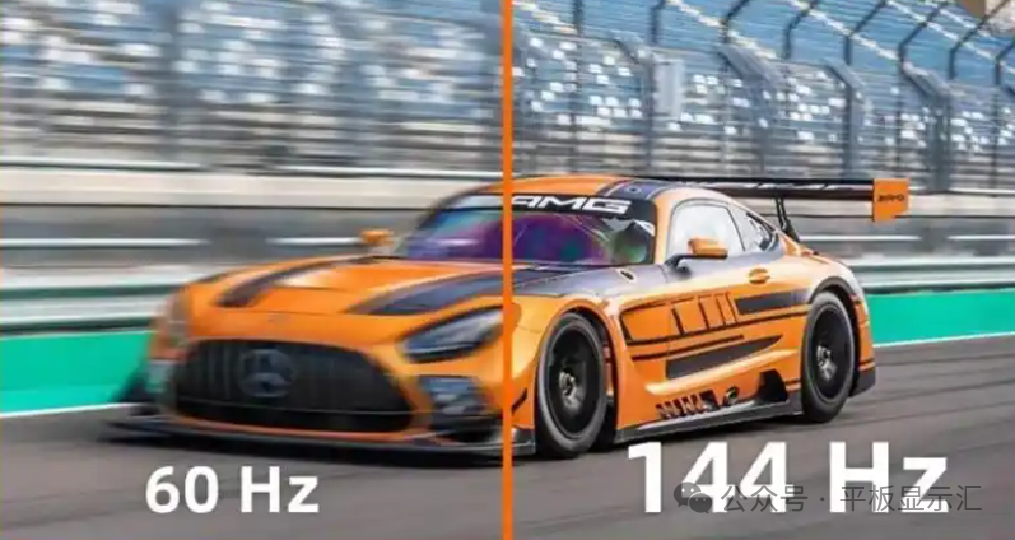 Comparison of Standard Refresh Rate and High Refresh RateIncreasing the display refresh rate can provide clearer display effects during dynamic images, offering users a smoother visual experience.There are many ways to increase the refresh rate in TFT-LCD display modules, the most common methods include: using high mobility materials, such as IGZO and LTPS instead of a-Si; using fast-response liquid crystals; using low-resistance materials, such as copper instead of aluminum; and employing software and algorithmic assistance.However, a higher refresh rate is not always better; as the refresh rate increases, the power consumption of the display module will also rise, reducing the standby time of the device; the heat generated by the display module will increase; and the charging time for each frame will shorten, which can lead to insufficient charging time, resulting in signal loss and display issues.Taking the thickness of LCD display modules used in mid-range smartphones as an example,the requirements for refresh rates from smartphone terminal customers can generally indicate the trend of display modules moving towards higher refresh rates.① a-Si LCD Display Modules Refresh Rate: The mainstream refresh rate has increased from 60Hz before 2023 to a coexistence of 60/90Hz in 2024, and further to a coexistence of 90/120Hz in 2025.② LTPS LCD Display Modules Refresh Rate: The mainstream refresh rate has increased from a coexistence of 60/90Hz before 2023 to a coexistence of 90/120Hz in 2024, and further to a coexistence of 90/120/144Hz in 2025.
Comparison of Standard Refresh Rate and High Refresh RateIncreasing the display refresh rate can provide clearer display effects during dynamic images, offering users a smoother visual experience.There are many ways to increase the refresh rate in TFT-LCD display modules, the most common methods include: using high mobility materials, such as IGZO and LTPS instead of a-Si; using fast-response liquid crystals; using low-resistance materials, such as copper instead of aluminum; and employing software and algorithmic assistance.However, a higher refresh rate is not always better; as the refresh rate increases, the power consumption of the display module will also rise, reducing the standby time of the device; the heat generated by the display module will increase; and the charging time for each frame will shorten, which can lead to insufficient charging time, resulting in signal loss and display issues.Taking the thickness of LCD display modules used in mid-range smartphones as an example,the requirements for refresh rates from smartphone terminal customers can generally indicate the trend of display modules moving towards higher refresh rates.① a-Si LCD Display Modules Refresh Rate: The mainstream refresh rate has increased from 60Hz before 2023 to a coexistence of 60/90Hz in 2024, and further to a coexistence of 90/120Hz in 2025.② LTPS LCD Display Modules Refresh Rate: The mainstream refresh rate has increased from a coexistence of 60/90Hz before 2023 to a coexistence of 90/120Hz in 2024, and further to a coexistence of 90/120/144Hz in 2025. Development Trends of Refresh Rates in TFT-LCD Display ModulesAny technology development and iteration will have certain pros and cons, but since new technologies can continue to iterate and advance, the benefits must outweigh the drawbacks; the core reason lies in finding a balance that is widely accepted by consumers between the advantages and disadvantages.Note: The article represents personal views; differing opinions are welcome in the comments or through private messages.Alright,that concludes today’s sharing.This is acontent-rich public account, adhering to the principle of “speak without reservation, and say everything”,hoping it helps you.Author Profile:I am Bufan, with over 10 years of experience in the display industry, having progressed from a technical novice to a technical director and product technology expert. I specialize in addressing various technical issues related to display products and hope to help others avoid the pitfalls I have encountered. Follow my public account, add me as a friend, and let me help you navigate the complexities of flat panel display technology. Remember to set it as a favorite to see articles promptly.Recently, many fans have consulted me, hoping to request some paid assistance. Based on the resources I currently have, I have initially organized the services I can provide to fans as follows; those interested can scan the code for consultation.
Development Trends of Refresh Rates in TFT-LCD Display ModulesAny technology development and iteration will have certain pros and cons, but since new technologies can continue to iterate and advance, the benefits must outweigh the drawbacks; the core reason lies in finding a balance that is widely accepted by consumers between the advantages and disadvantages.Note: The article represents personal views; differing opinions are welcome in the comments or through private messages.Alright,that concludes today’s sharing.This is acontent-rich public account, adhering to the principle of “speak without reservation, and say everything”,hoping it helps you.Author Profile:I am Bufan, with over 10 years of experience in the display industry, having progressed from a technical novice to a technical director and product technology expert. I specialize in addressing various technical issues related to display products and hope to help others avoid the pitfalls I have encountered. Follow my public account, add me as a friend, and let me help you navigate the complexities of flat panel display technology. Remember to set it as a favorite to see articles promptly.Recently, many fans have consulted me, hoping to request some paid assistance. Based on the resources I currently have, I have initially organized the services I can provide to fans as follows; those interested can scan the code for consultation.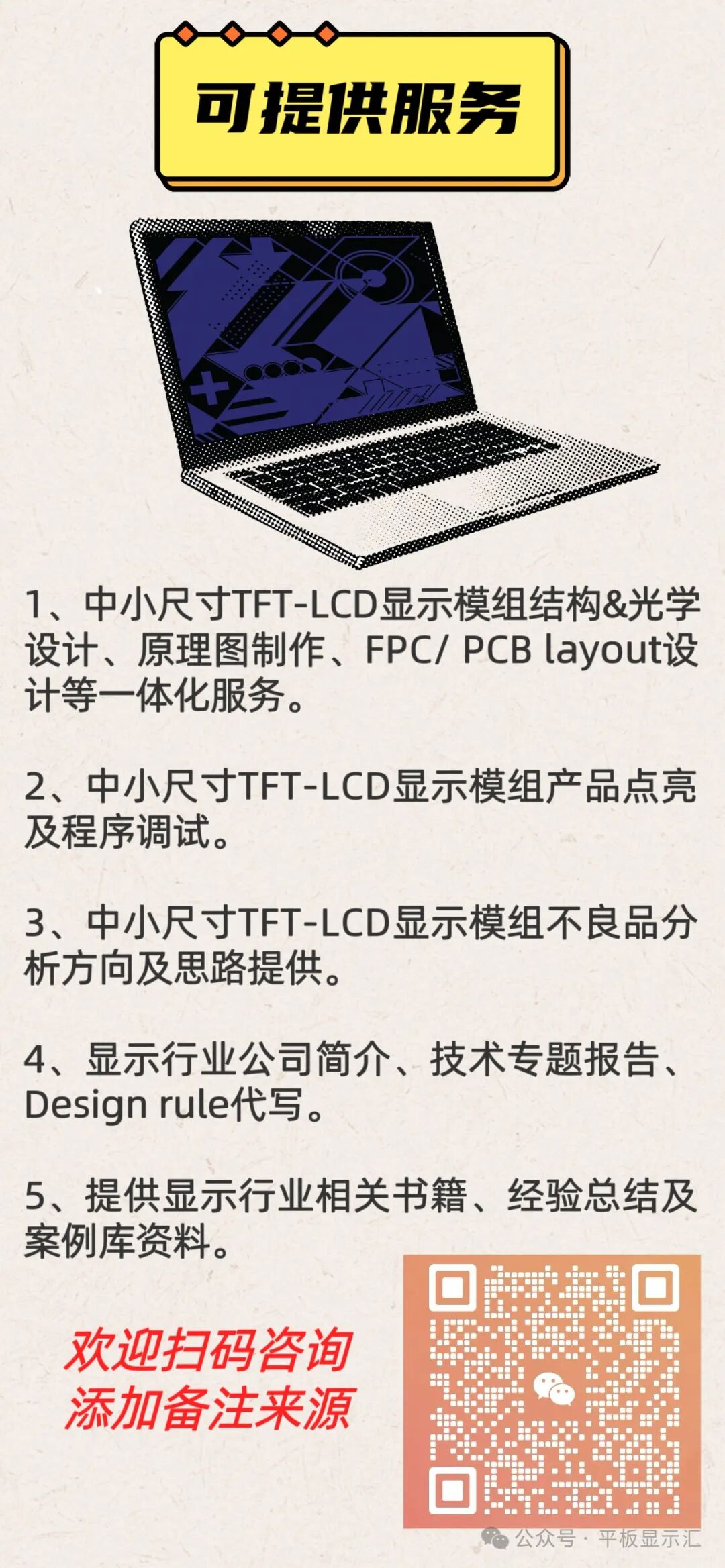 Recommended Previous Articles:【Technical Insights】Understanding the Core Optical Components of Backlighting—Light Guide Plate (LGP)【Technical Insights】Understanding DBEF and APF Structures and Brightness Enhancement Principles【Technical Insights】Understanding Optical Films Used in TFT-LCD—Brightness Enhancement Film【Technical Insights】Understanding Optical Films Used in TFT-LCD—Reflective Film【Technical Insights】Understanding Optical Films Used in TFT-LCD—Diffusion Film (4600 words detailed explanation)
Recommended Previous Articles:【Technical Insights】Understanding the Core Optical Components of Backlighting—Light Guide Plate (LGP)【Technical Insights】Understanding DBEF and APF Structures and Brightness Enhancement Principles【Technical Insights】Understanding Optical Films Used in TFT-LCD—Brightness Enhancement Film【Technical Insights】Understanding Optical Films Used in TFT-LCD—Reflective Film【Technical Insights】Understanding Optical Films Used in TFT-LCD—Diffusion Film (4600 words detailed explanation)